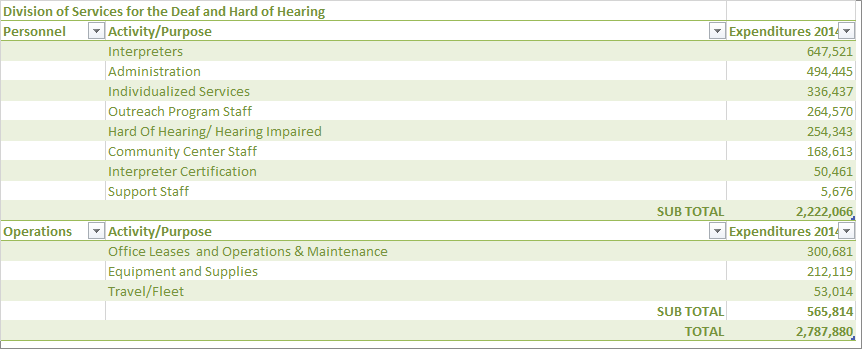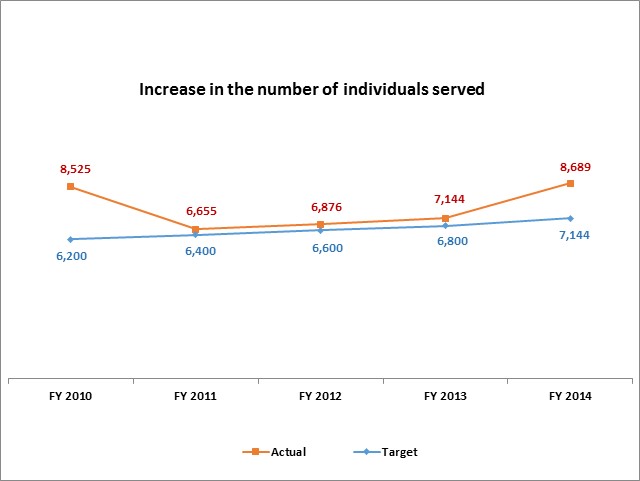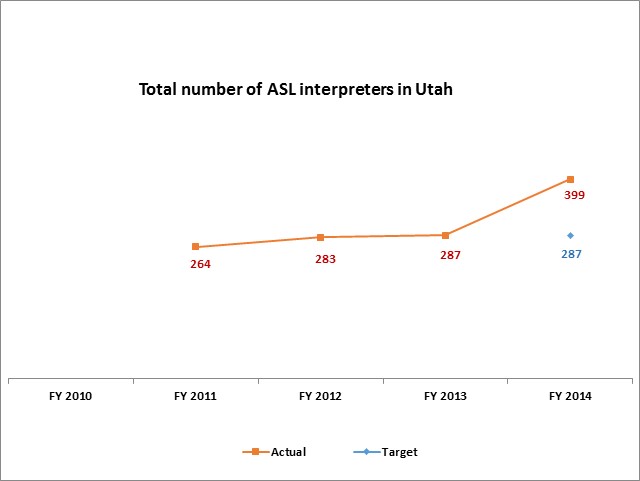The Division of Services to the Deaf and Hard-of-Hearing (DSDHH) helps increase productivity, independence, and community integration of individuals who are deaf or hard-of-hearing. Program services provided through the Robert G. Sanderson Community Center for the Deaf, and a satellite office in St. George, include: information and referral, educational classes, counseling and case management services, recreation and leisure activities, telecommunication services for the deaf, repair and maintenance of assistive technology, interpreter services, and a library. The division operates four programs: Deaf and Hard of Hearing, Utah Interpreter Programs, Outreach and Technology Program, and the Individualized Program.
During the 2015 General Session, the Legislature appropriated for Fiscal Year 2016, $2,903,300 from all sources for Deaf and Hard of Hearing. This is a 15.5 percent reduction from Fiscal Year 2015 revised estimated amounts from all sources. The total includes $2,727,000 from the General/Education Funds, an increase of 8.7 percent from revised Fiscal Year 2015 estimates.
In addition to statewide compensation and internal service fund cost increases, the following appropriation adjustments were made during the 2015 General Session:
For the most recent completed fiscal year, the following information represents the purposes for which the money was used:



Regarding the positive trend greater than 5% for the percent satisfactory outcomes on qualitative case reviews from the Deaf and Hard of Hearing program performance measures, the agency states, "The increase in the Satisfactory Outcomes is a result of implementation of the Hard of Hearing Rural Outreach program to provide assistance to more Utahns in need of division services, and includes the results of better use of social media to advertise services and events. This includes providing information through ASL videos on our Facebook page."
Regarding the positive trend greater than 5% for the total number of ASL interpreters in Utah from the Deaf and Hard of Hearing program performance measures, the agency states, "[increase in the] total number of ASL interpreters reflects the growing popularity of ASL interpreting as a career and the increased success of the 3 interpreter training programs in Utah. This trend has been needed as the number of certified interpreters has historically been insufficient for the need."
These programs are detailed in the following paragraphs.
Programs for the Deaf -- The deaf program includes activities and services to fulfill social, recreational, and adult learning needs with barrier-free communication. Specialized programs have been developed for deaf seniors, deaf teenagers, families with deaf children, people with multiple disabilities and some degree of deafness, and people who have lost their hearing as adults.
Programs for the Hard of Hearing -- The hard of hearing specialists work with hard-of-hearing and late-deafened individuals and their families to support those individuals with building various degrees of adjustment/coping skills by providing a barrier-free environment in which to learn, share experiences and enjoy socialization with others who have similar experiences. They provide classes, workshops, and sign language and speech reading training. They also provide information and resources on self-advocacy, assistive technology, purchasing hearing aids, the Americans with Disabilities Act (ADA), self-help strategies and employment issues.
Utah Interpreter Program -- The program provides interpreter training, mentoring, best practices, and certification. The Center offers classes and workshops to help interpreters improve skills, increase knowledge, and prepare for certification.
The Center performs interpreter certification quality assurance evaluations to ensure that the deaf community is receiving quality interpreting services.
Individualized Services Program -- Services are provided at no cost to individuals who are deaf and hard of hearing, such as mental health counseling in family, group or individualized settings; case management services; assistance with reading documents; and referring clients to appropriate agencies or service providers.
Outreach and Technology Program -- Outreach services offer information and referrals to the public regarding deaf and hard-of-hearing issues. The program provides presentations or workshops on the needs and technology available for individuals who are deaf or hard of hearing.
The center offers a demonstration lab that has equipment available for individuals to test before purchase. Equipment includes special phones for the hard of hearing, TTY devices, doorbell and phone transmitters and flashers, baby cry devices, fire/burglar alarms, and computer software and hardware.
The table below illustrates that Education Fund represents 91 percent of the total division revenue. The only other revenue source in the division's budget is dedicated credits. The division generates dedicated credits through the sale of services that includes items such as: building rental income (Utah Association for the Deaf and a bookstore); fees for interpreter certification evaluation; fees for interpreter services to Courts and state agencies; fees for interpreter training workshops; fees for sign language classes; and mental health service fees.
COBI contains unaudited data as presented to the Legislature by state agencies at the time of publication. For audited financial data see the State of Utah's Comprehensive Annual Financial Reports.